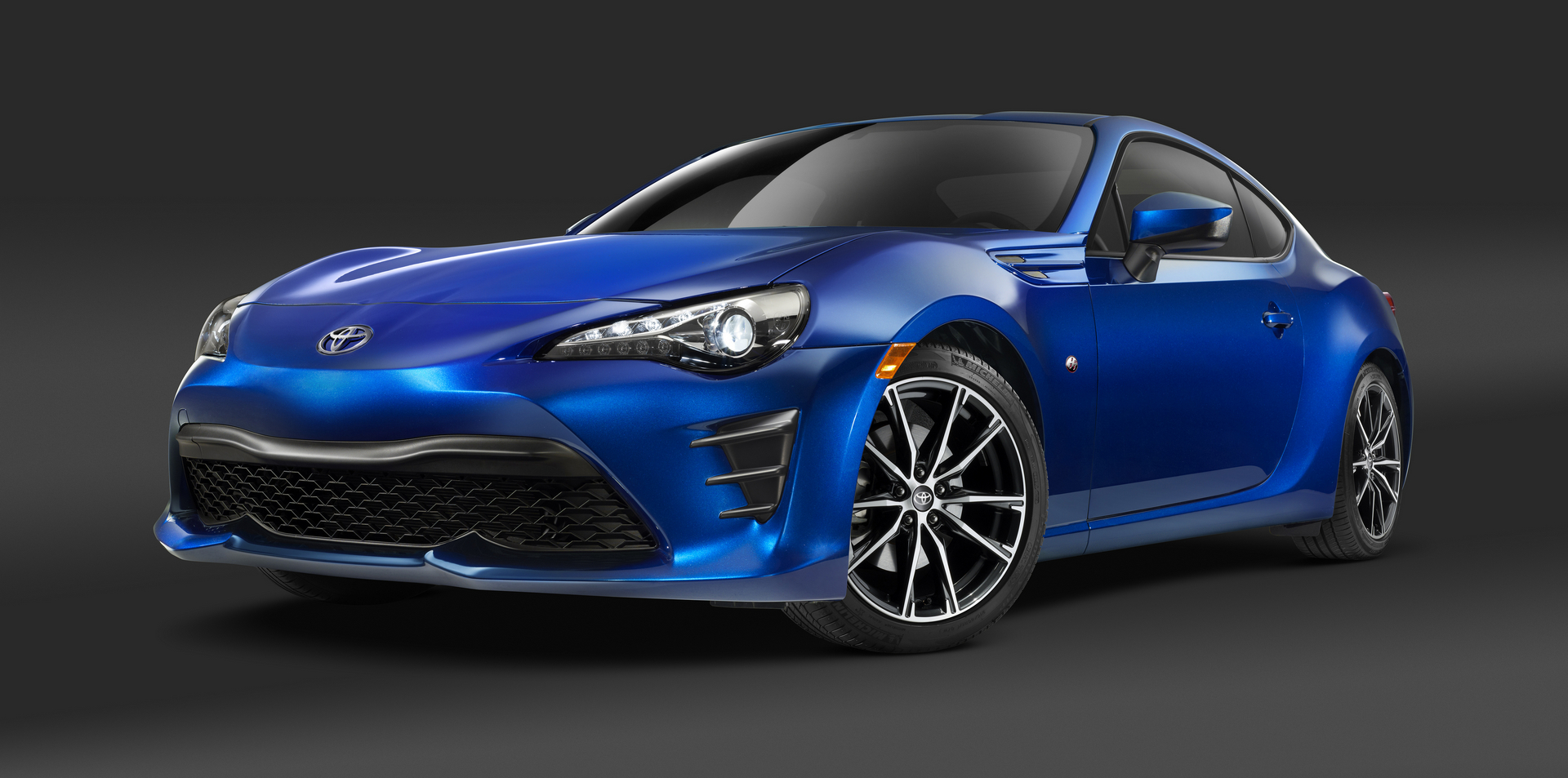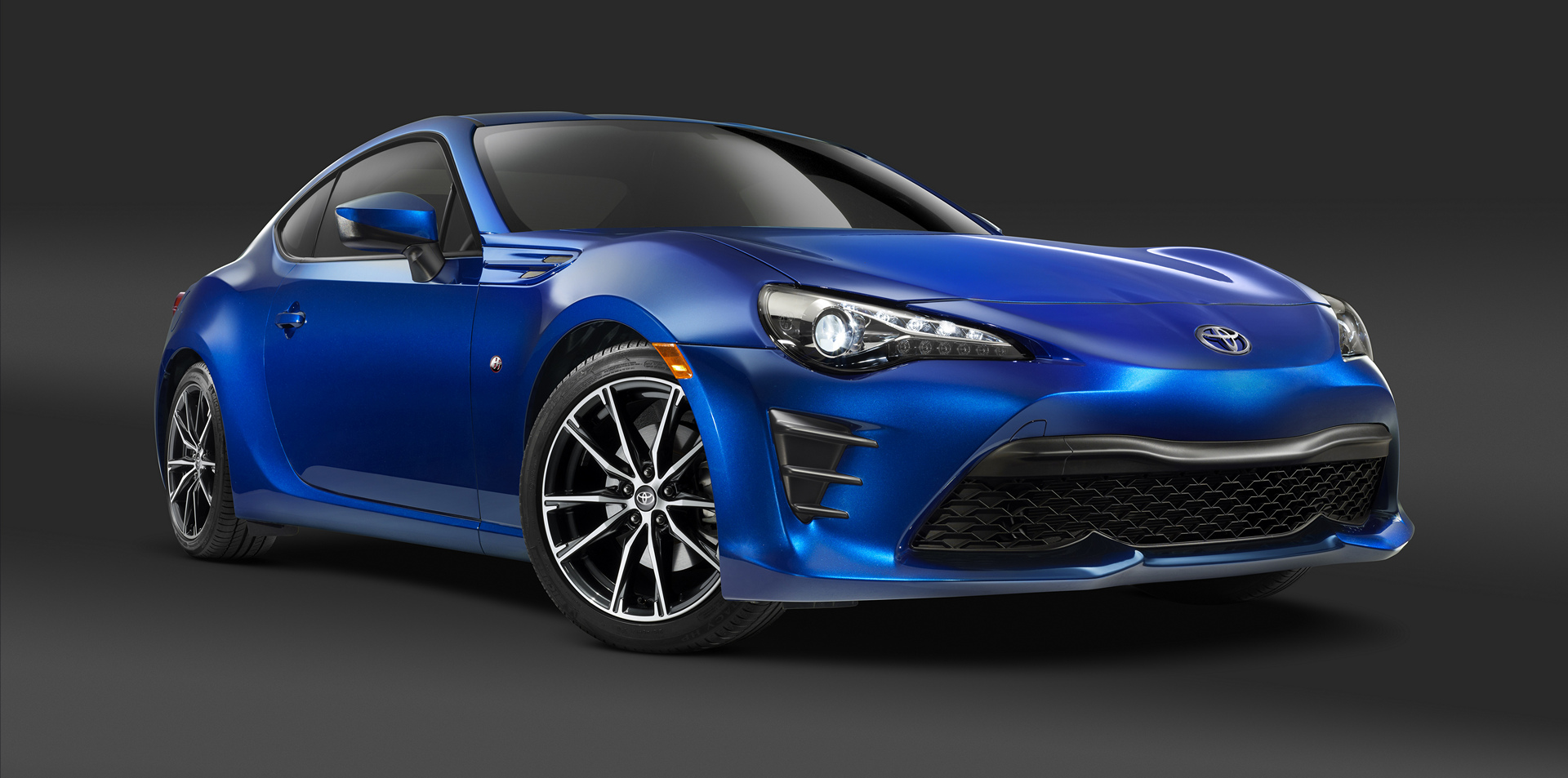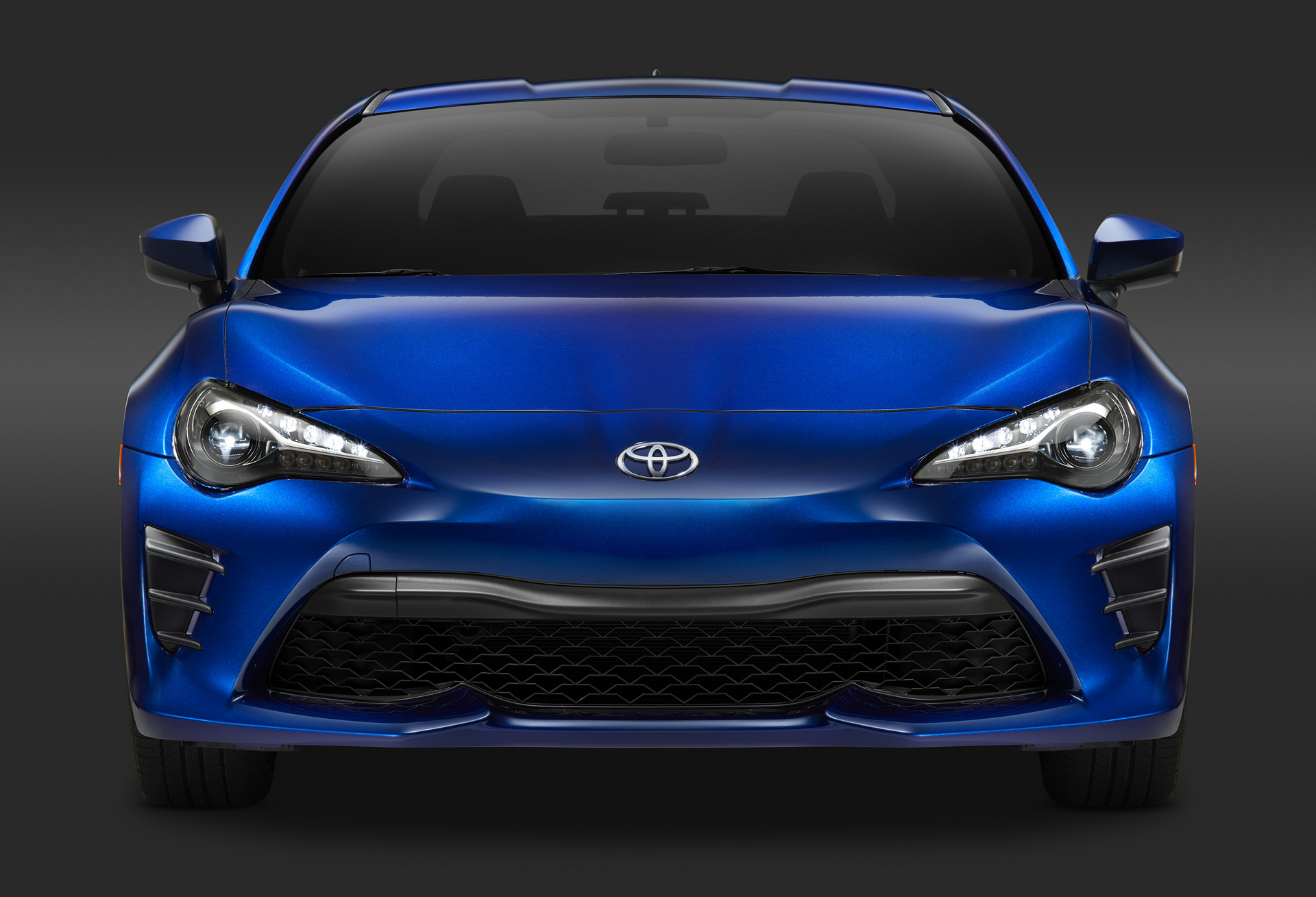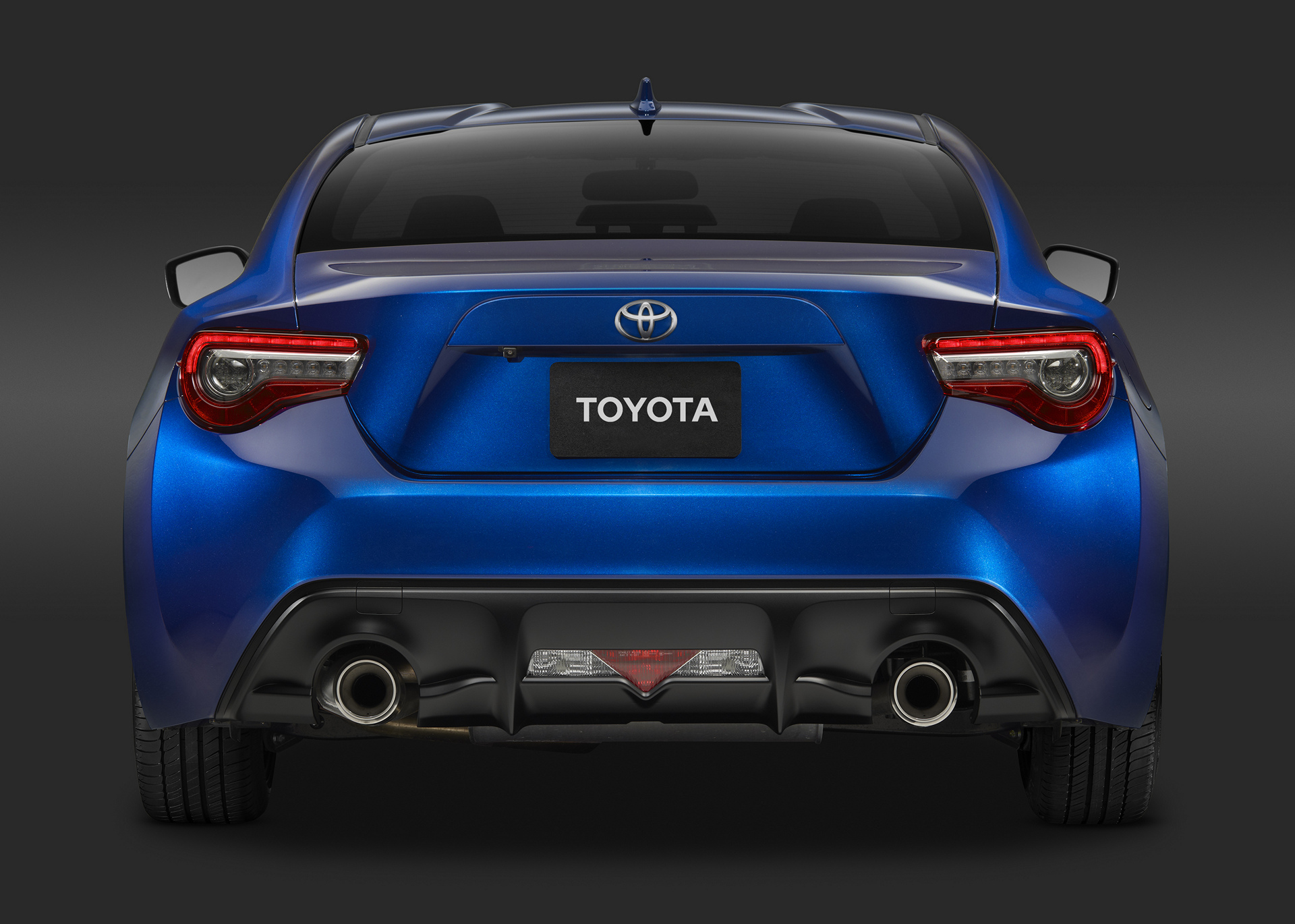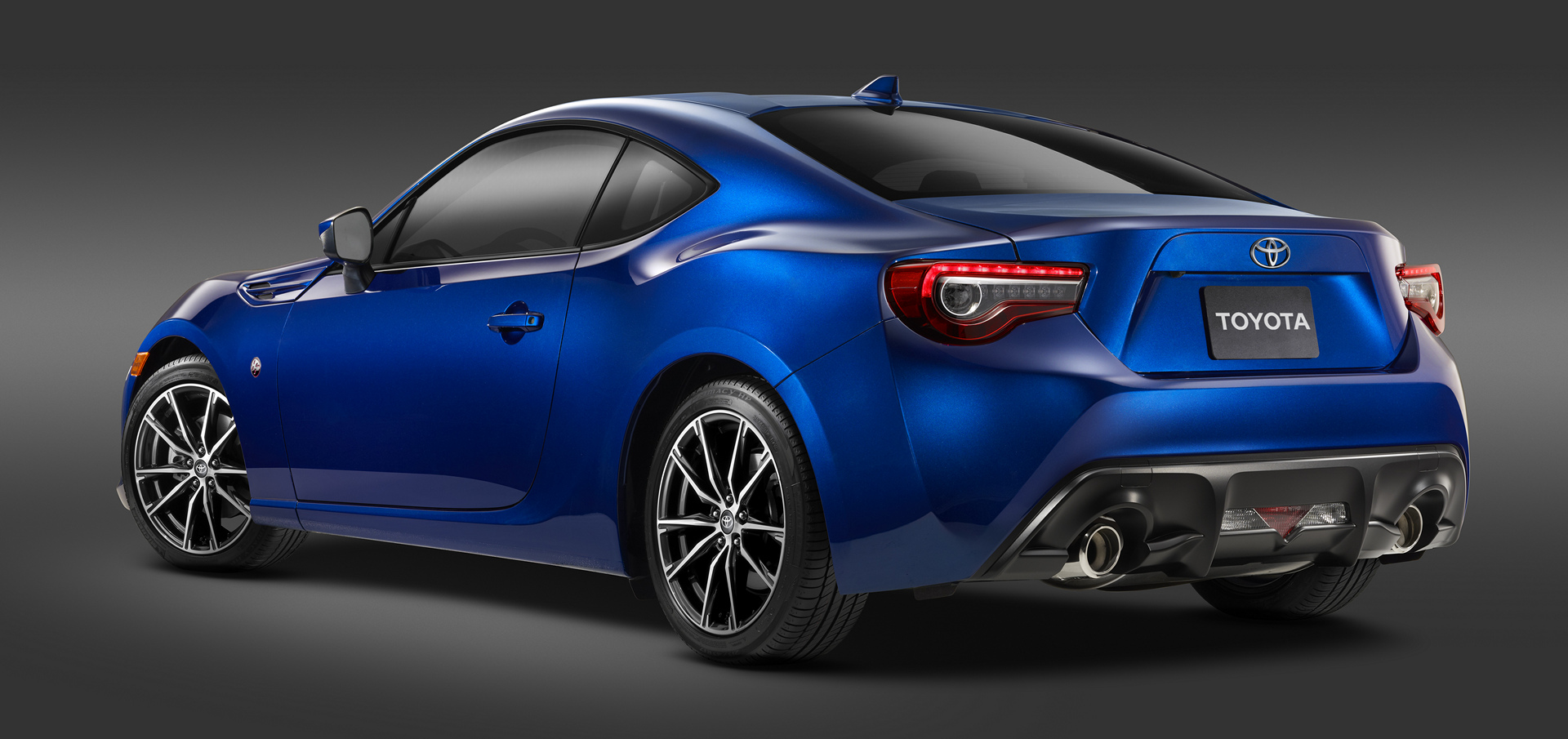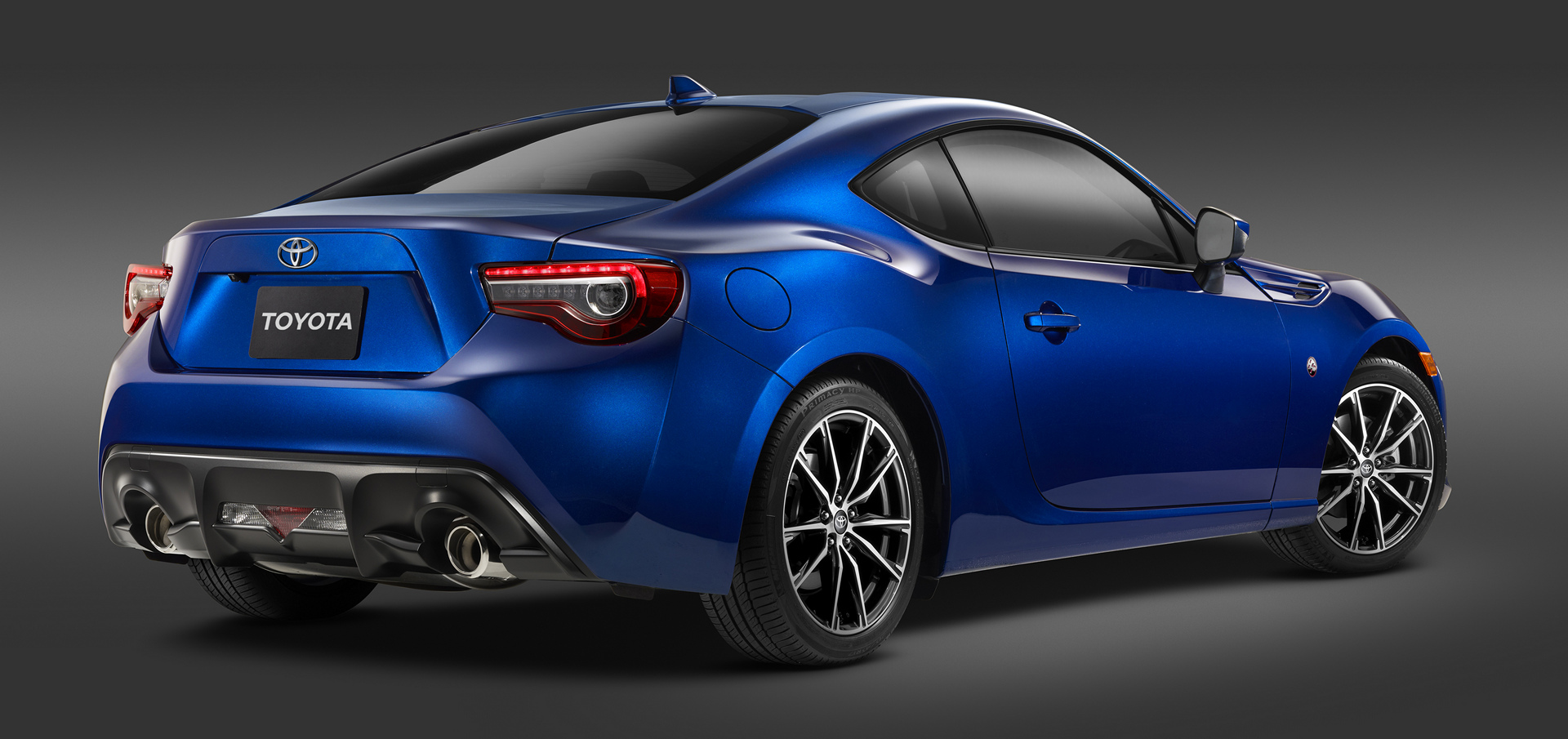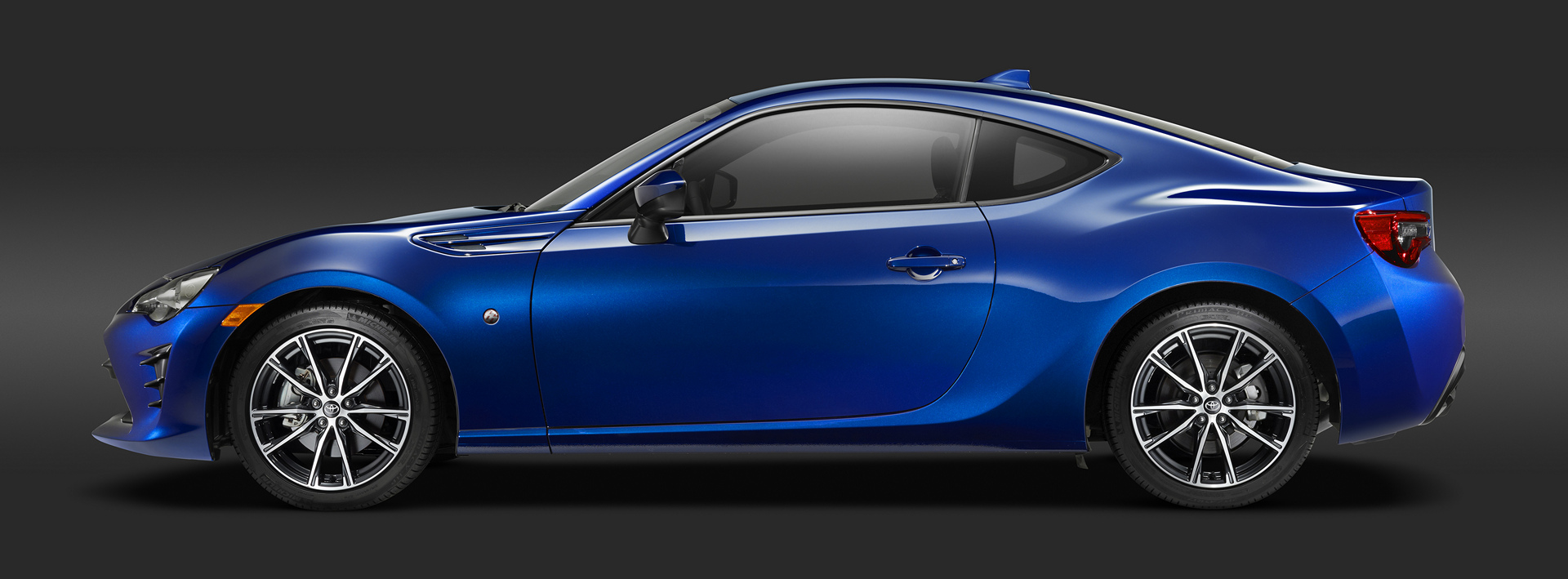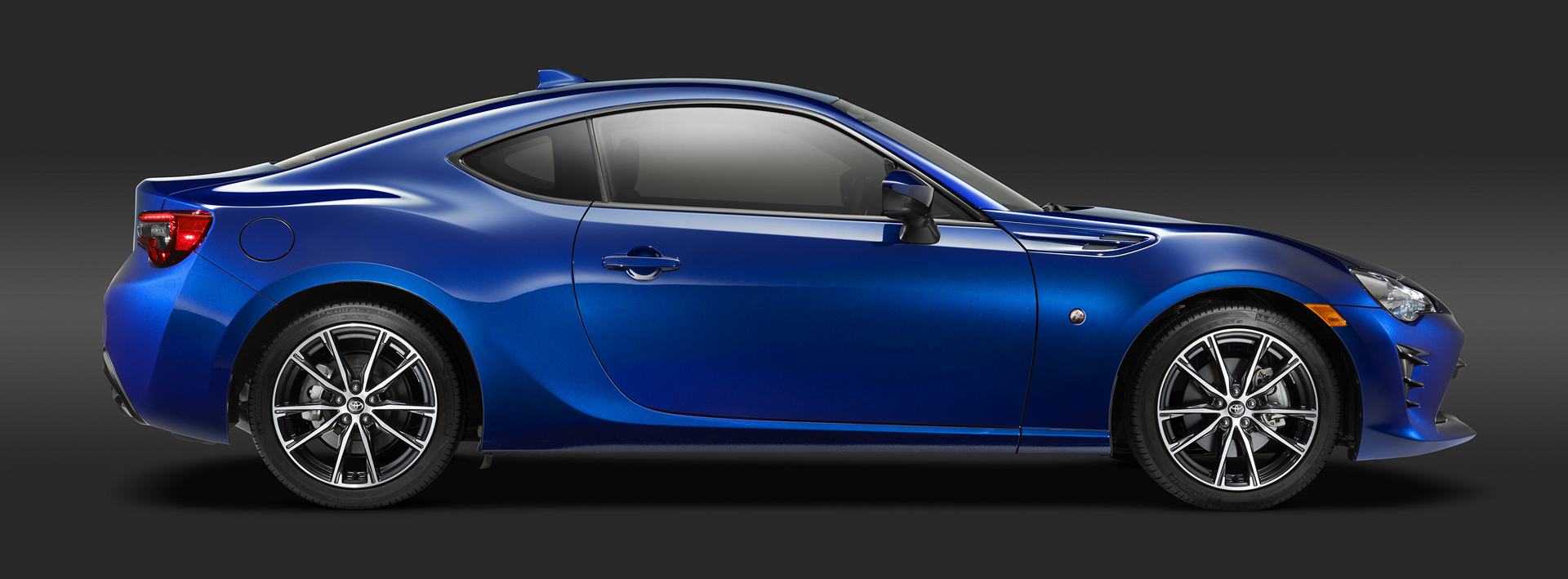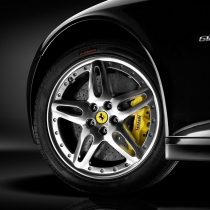It was hailed as nothing less than the return of the fundamental, affordable rear-drive sports car when it arrived a few years back, and now for 2017 it’s got a new name, a new look and higher performance: the Scion FR-S adopts the Toyota 86 identity used in other global markets, as Scion and its models transition back to the Toyota brand.
It is a happy coincidence that the 86’s 2.0-liter boxer-type four-cylinder engine has 86mm bore and stroke dimensions. For ardent Toyota fans, ‘86’ is a revered badge, indeed. They know ‘AE86’ as the global name for the Toyota Corolla GT-S that sold here in the mid-1980s. It was an affordable, tossable, rear-drive sports coupe with a high-revving 1.6-liter engine and was simply a blast to drive. (And it looked so ’80s with those big ‘Twin Cam 16’ decals on its doors.) In Japan, it was known as “hachi-roku,” meaning 8-6.
Unchanged for the Toyota 86 is a combination of style, performance, handling and affordability that have made this 2+2 sports car a hit with enthusiasts of all ages.
More Than Just a Pretty (Aggressive) Face
For its move to Toyota, the 86 sports car adopts more aggressive styling with a larger center intake emphasizing the low, wide stance of the car. The front of the car has a new high-tech design with standard LED front headlamps, daylight running lights, and turn signals, a new fog lamp bezel and revised bumper. The rear sports LED tail lamps and more sculpted bumper design with integrated aerodynamic diffuser. The alloy wheels feature a new twisted spoke design and 86 logos have been incorporated into a badge on the front fender, as well as inside the front headlamps.
The interior also features the 86 logo on the new “Granlux” material used on the instrument panel surround. The same material adds a new, soft feel to the door trim. Drivers also will enjoy new seating material with silver stitching and a revised steering wheel with integrated audio controls and an 86 logo on the center hub.
Enhanced control and agile performance are achieved through revised shock tuning and a spring rate change. On the manual version of the car, additional performance comes from a differential gear ratio change and revised engine tuning that increases the torque to 156 lb.-ft, as well as a five-horsepower increase to 205 hp. On both manual and automatic 86 models, Hill Start Assist Control (HAC) helps prevent the car from rolling back on steep hills from a stop.
The Whole Performance Package
At a svelte 2,758 lbs. (with six-speed manual transmission), the Toyota 86 is among the lightest sports cars on the market. The 86 also sports an ultra-low center of gravity, and its sleek body meets the wind with a low 0.29 coefficient of drag (Cd).
The 2.0-liter aluminum boxer engine delivers 205 hp at 7,000 rpm and 156 lb.-ft. of peak torque at 6,400 rpm. (Automatic version: 200 hp at 7,000 rpm and 151 lb.-ft. at 6,400 rpm.) Its 86mm x 86mm bore and stroke dimensions make the engine eager to rev, while dual variable valve timing helps give it a broad torque curve. So, the 86 feels responsive whether running errands or an autocross course.
Among the engine’s high-performance features used to extract 100 hp per liter of displacement is the Toyota-innovated D4-S fuel injection system that combines direct injection and port injection technologies. The direct system provides a cooling effect in the cylinders, which allows the engine to use a high 12.5:1 compression ratio. The port fuel injectors come into play during light- and medium-load conditions to maximize combustion efficiency.
All of those facts and figures add up to speedy performance, yet the Toyota 86 also delivers outstanding fuel economy for a sports car: EPA-estimated 23 mpg city and 32 mpg highway with the six-speed automatic transmission and 20 city/27 highway with the six-speed manual.
Six Speeds, Two Ways
Sports car purists love the 86’s standard six-speed manual transmission. It’s got a short-throw shifter and easy-effort clutch, making it a joy to flick through the gears. The automatic is a joy to work, too, with its steering-wheel-mounted paddle shifters, Sport mode, and Dynamic Rev Management® technology, which “blips” the throttle on downshifts. With its super-fast shifts, it’s an automatic to please those purists who prefer the choice to shift manually or automatically.
The high-performance drivetrain is completed by a standard Torsen® limited-slip differential that helps maximize traction between the rear wheels while cornering.
Pure Sports Car Platform
The Toyota 86 chassis is a specially developed rear-drive sports car platform using a MacPherson strut front suspension (including a strut brace) and double-wishbone rear suspension. Electric power-assist steering is tuned to provide excellent feedback through the small-diameter, leather-wrapped wheel. The steering is quick, with just 2.48 turns lock to lock, and with a tight 36.1-ft. turning circle. In the driver’s hands, the thick-rimmed wheel feels like a surgical tool for operating on the road.
The 17 x 7-inch alloy wheels wear 215/45R17 summer performance or all-season tires. For track driving and autocross competition, Vehicle Stability Control (VSC) can be put in Track mode or shut off completely.
Sports Car Provenance
The world’s best sports cars boast of heritage. The Toyota 86 certainly lives up to that standard, counting in its lineage the tiny Toyota Sports 800 of the mid-1960s, one of the first sports cars with a lift-off roof panel.
Then came the 1967-1970 Toyota 2000 GT, a hand-built exotic coupe that showcased Toyota performance capability. The 2000 GT was rare, with 351 built and just 62 of those imported to the U.S. Many saw the 2000 GT for the first time (as a custom-built roadster) in the 1967 James Bond film, “You Only Live Twice.”
On the racetrack, a 2000 GT won the inaugural Six Hours of Fuji in 1967 and scored SCCA C-Production wins in the U.S. More recently, several 2000 GTs have crossed the $1 million threshold at collector-car auctions.
The Toyota 86 took some design inspiration from the classic 2000 GT, which shows in the low roof height, flowing front fenders and profile view. Here’s a noteworthy comparison: The 2000 GT’s 2.0-liter six-cylinder engine produced 150 hp and 130 lb.-ft. of torque; the 2.0-liter boxer four in the 2017 Toyota 86 M/T produces 205 hp and 156 lb.-ft. of torque while the automatic has 200 hp and 151 lb.-ft. of torque. Isn’t progress fun?
Pure Sports Car Cabin
The Toyota 86’s honest sports car approach carries into the cabin, where intuitive controls help the driver keep the focus on driving. A large center-mounted tachometer, the focal point of the easy-to-read gauge panel, integrates a digital speedometer and features a programmable rev indicator. It’s flanked on the left by an analog speedometer, while fuel level and temperature gauges are positioned to the right of the tachometer.
Classic sports car touches include simulated carbon-fiber dash and door trim and aluminum sport pedals and scuff plates. The Toyota 86 shows its practical side with a rear seatback that lowers to expand trunk space.
Powerful Audio and Multimedia
The Toyota 86 comes standard with Display Audio which features a 7-inch touchscreen display (which integrates the rearview camera), 8-speaker Pioneer audio system, Bluetooth® for hands-free phone capability and music streaming, HD Radio™, iPod® connectivity and AUX and USB inputs. It’s easy to reference song titles, album names and artist names right on the head unit.
For on-the-go connectivity and on-board navigation, the optional 86 Display Audio with Navigation system features push-to-talk voice navigation and geo-located points of interest. Aha™, available on iTunes® and Google Play®, provides access to 100,000 free audio stations. Drivers also can find local restaurants, coffee, hotels, and weather updates through location-based services like Yelp and TripAdvisor, along with popular social media applications, sports, news and entertainment. A phonebook holds up to 2,500 contacts with four numbers each.
STAR Safety System
The 2017 Toyota 86 comes standard with the STAR Safety System™ which features an Anti-lock Brake System (ABS), Electronic Brake Distribution (EBD), Traction Control (TRAC), Brake Assist (BA), Vehicle Stability Control (VSC) and Smart Stop Technology (SST).
The supplemental restraint system includes driver and front passenger dual-stage advanced airbags, driver and front passenger seat-mounted side airbags, and front and rear passenger side curtain airbags. The rear seats can accommodate front-facing child seats.
Limited Warranty
Toyota’s 36-month/36,000 mile basic new-vehicle warranty applies to all components other than normal wear and maintenance items. Additional 60-month warranties cover the powertrain for 60,000 miles and corrosion with no mileage limitation.
Standard Toyota Care is a complimentary plan covering normal factory-scheduled maintenance and 24-hour roadside assistance for two years or 25,000 miles, whichever comes first.


